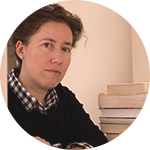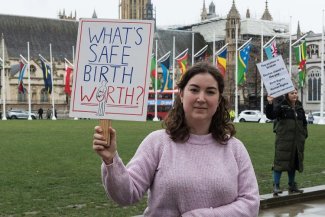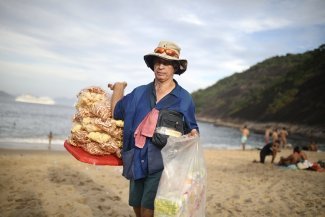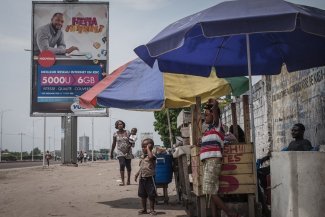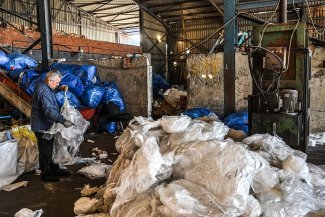The Sustainable Development Goals, 17 in total, were set out in the 2030 Agenda. They include ending hunger, decent work for all, and peace, justice and solid institutions. To meet the SDGs, 169 specific targets were agreed on, detailing the financing, the means of implementation and the commitments made by the signatories. Picture from June 22, 2011 (Sapa, Vietnam).
We are closing this summer series, launched in July with a special issue on climate change – followed by supply chains, the future of work, union organising, grassroots movements, the health of our democracies, labour exploitation and women’s rights – with a look at the Sustainable Development Goals (SDGs).
These retrospectives, presented every Friday for ten weeks by the Equal Times editorial team – Tamara Gausi (English section), Mathilde Dorcadie (French section) and myself (Spanish section), have sought to provide an overview of many of the issues we cover, as well as allowing us to dig into our archives and rescue 50 or so key articles produced by our network of correspondents and contributors in every continent.
The SDGs, the issue we are closing this special series with, are one of the cornerstones of our Development section, although not exclusively covered and analysed under this heading.
The SDGs – 17 in total, set out under the 2030 Agenda, and which include “zero hunger”, “decent work and economic growth” and “peace, justice and solid institutions” – also referred to as Global Goals, are an improved and expanded version of the Millennium Development Goals set in the year 2000. The Sustainable Development Goals, along with their 169 specific targets, were launched in 2016, under the auspices of the United Nations, and, more specifically, the United Nations Development Programme (UNDP), following their adoption by the UN General Assembly.
The overall aim, quite simply, is to build a “sustainable world by 2030”. It is ambitious. And just. But how realistic is it?
In a recent opinion piece, experts Nerea Craviotto and Theo Morrissey ask precisely that question. In their article Sustainable Development Goals – how are we doing?, although critical of the lack of progress and action on the ground, they conclude on a positive note, on referring to decent work for all.
“A few years ago, it would have been hard to have predicted the adoption of the SDGs – and yet it happened. There are some hints that the stars may be aligning for next year: with the HLPF’s focus on ‘empowering people and ensuring inclusiveness and equality’ (with Goal 8 on decent work as its centrepiece), as well as with the ILO Centenary, there is the possibility for real impact. As a result, trade unions must use this opportunity to push back against the shrinking of space for their engagement at national and international level.”
Paola Simonetti, director of the ITUC’s Trade Union Development Cooperation Network, in her editorial What does the 2030 Agenda mean for labour?, raises a basic issue, although not the only one, with the achievement of the goals:
“While this is certainly a significant achievement compared to the MDGs, the 2030 Agenda still lacks teeth when it comes to implementation. In fact, the success of the 2030 Agenda depends solely on whether the countries that have committed to it will hold true to their promises.”
The development specialist Chukwu-Emeka Chikezie, in his piece Transforming states of fragility comes down to us, warns that we are already “off-track”, and if no action is taken, we will reach 2030 with over 80 per cent of the world’s population living in “fragile contexts”.
Although there are many articles with the tag sustainable development, we would recommend the following, if only to put a “face” to some of the SDGs, such as those related to good health and well-being; peace, justice and solid institutions, or climate action.
From our correspondent in Argentina, Nazaret Castro, The rising repression of social protest in Latin America. From Asia, Pollution in China: apocalyptic skies and public outrage, by Jose A. Díaz and Tania Romero, and from the African continent, In Senegal, all hands are on deck to beat the blight of malaria, by Senegal-based journalist Brun’s Morgan.
We hope that a good portion – if not all – of our offerings this summer (or winter for those in the southern hemisphere) has sparked your interest, and should you have any comments or suggestions, here we are.
Sustainable Development Goals – how are we doing?
By Nerea Craviotto and Theo Morrissey
Each year progress towards the Sustainable Development Goals (SDGs) is reviewed with the aim of identifying pitfalls and ensuring progress remains on track. Governments, institutions, the private sector, trade unions and civil society all come together at the United Nations headquarters in New York for the lofty sounding High-Level Political Forum on Sustainable Development, referred to by insiders as the HLPF.
This year, the theme of the HLPF was ‘transformation towards sustainable and resilient societies’. The UN’s official Sustainable Development Report 2018 highlighted climate change, conflict, growing inequality and rapid urbanisation amongst the challenges.
Ahead of the big event, International Trade Union Confederation (ITUC) general secretary Sharan Burrow highlighted what such a transformation would mean for working people: the opportunity for a people-centred approach built on the scaling up of the ‘just transition’ model versus the risk of further marginalising those most exposed to the consequences of inadequate climate action, with its dire consequences for the long-term stability of societies.
What does the 2030 Agenda mean for labour?
By Paola Simonetti
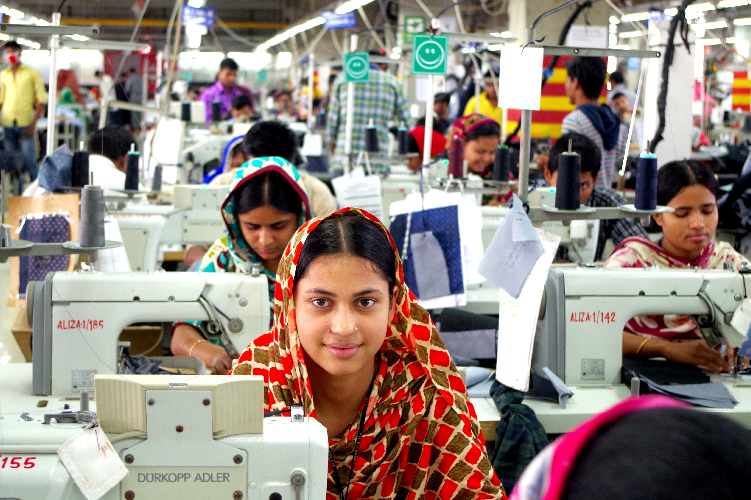
Trade union engagement has been key to the inclusion of priorities such as decent work in the 2030 Agenda.
In 2015, the United Nations adopted a new framework on sustainable development, known as the 2030 Agenda. This agenda contains a set of objectives, the Sustainable Development Goals (SDGs), to which all countries have committed. The 2030 Agenda builds on the Millennium Development Goals (MDGs, 2000-2015), and has a broader scope. The MDGs were essentially framed in a North-South divide logic, whereas the 2030 Agenda is relevant for all countries – developed and developing alike – and goes beyond the sole objective of poverty eradication.
The 17 Sustainable Development Goals, 169 targets and many more indicators are therefore a first attempt to provide a holistic framework bringing together social, economic and environmental provisions to foster universal progress.
While this is certainly a significant achievement compared to the MDGs, the 2030 Agenda still lacks teeth when it comes to implementation. In fact, the success of the 2030 Agenda depends solely on whether the countries that have committed to it will hold true to their promises.
Transforming states of fragility comes down to us
By Chukwu-Emeka Chikezie
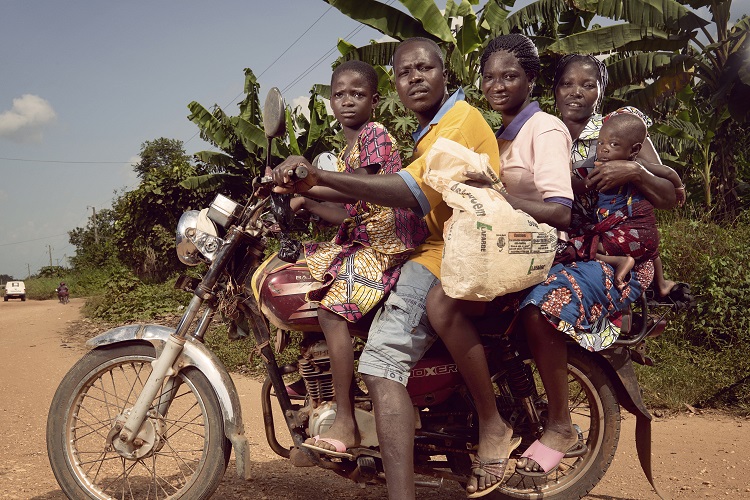
Both the leaders, and the ordinary people, of countries in fragile contexts are responsible for breaking the fragility trap.
Three years into implementation of the 2030 Sustainable Development Goals (SDGs), the Organisation for Economic Co-operation and Development (OECD) warns that we are already off-track. Worse, without action, over 80 per cent of the world’s poorest people will live in fragile contexts by 2030. The OECD believes fragility poses a major global threat to the implementation of the 2030 Agenda for Sustainable Development.
The OECD uses ‘fragile contexts’ because fragility is hard to define, and our understanding constantly evolves. More countries object to the ‘fragile state’ label, which they say stigmatises them. So, in its States of Fragility 2018 report, the OECD identifies 58 contexts classified as fragile in a framework it has developed since 2016. Fragility covers political, economic, societal, environmental, and security dimensions. These 58 contexts include Syria, the Democratic Republic of Congo, Venezuela, Yemen, Laos, Solomon Islands, Rwanda, Tanzania, and Sierra Leone.
Fragility can wreak havoc, even in countries that have strong institutions, countries that are middle-income, and that aren’t at war. All forms of fragility matter, be it chronic fragility or ‘fragility-lite’. In whatever way it manifests itself, fragility is a slippery slope.
The rising repression of social protest in Latin America
By Nazaret Castro
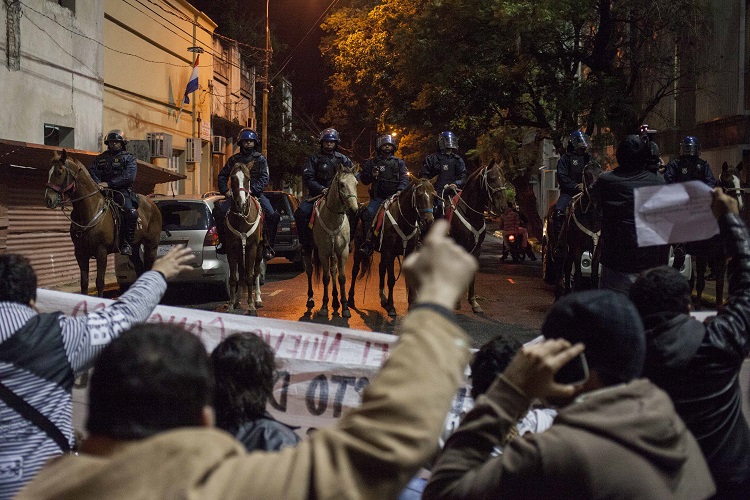
Mounted police keeping guard on University students protesting against corruption in the education sector, in front of the National Congress in Asuncion (Paraguay).
On 17 October, the day on which a commemoration is held every year in honour of Juan Domingo Perón, the corpse of Santiago Maldonado appeared in the Chubut River. The young activist had been missing for 80 days. He was last seen in the middle of a confrontation between members of the Mapuche community and state security forces, in the context of a long-standing battle over land rights with the multinational Benetton.
The suspense surrounding Maldonado’s whereabouts aroused a great sense of unease in a country where the word “disappeared” brings to mind the 30,000 victims of the civic-military dictatorship that ruled Argentina from 1976 to 1983, and hundreds of thousands of people gathered in the very same square, the Plaza de Mayo, whether Mothers of Plaza de Mayo first held their weekly gathering, over 40 years ago, to ask about the whereabouts of their loved ones.
“I have no idea...whether it’s 9,000 or 30,000,” President Mauricio Macri had said in November 2016 regarding the number of disappeared. His statements, together with those made by senior members of his government, marked a break with the Kirchnerista governments, which had championed human rights – although less so in the case of indigenous peoples’ rights.
Pollution in China: apocalyptic skies and public outrage
By Jose A. Díaz and Tania Romero

The term “APEC blue” is a neologism reflecting the resignation and indignation of the average citizen, mixed with the keen sense of humour in China. It emerged during an APEC summit in 2014, during which spectacular skies and the best air quality indicators possible were achieved after having brought Beijing to a standstill for days. The rest of the time, it is pollution grey.
A clear day in the big cities of China, with blue skies and white clouds, a day when nearby buildings can be clearly made out, has a name: it is an ‘APEC blue’ day. The inhabitants of mega cities across Asia’s economic giant – accustomed to grey skies, constant haze and blurred outlines – coined this term a couple years ago to refer to the unusual phenomenon of having a good day without critical levels of pollution.
The people of China have spent decades tolerating the deterioration of their environment. It is seen as a punitive toll fee on the country’s road to impressive economic development. But now that it is the world’s second largest economy, the biggest exporter, and with its ever larger and increasingly affluent middle class, the effects of pollution in China have become one of the public’s top concerns.
According to various studies, there are hundreds of thousands of pollution-related deaths in China. The figure could be as high as 1.6 million a year according to a scientific paper published by Berkeley Earth (based on data showing that, during the period studied, 92 per cent of the population in China experienced over 120 hours of unhealthy air and 38 per cent experienced average concentrations that were unhealthy).
In Senegal, all hands are on deck to beat the blight of malaria
By Brun’s Morgan
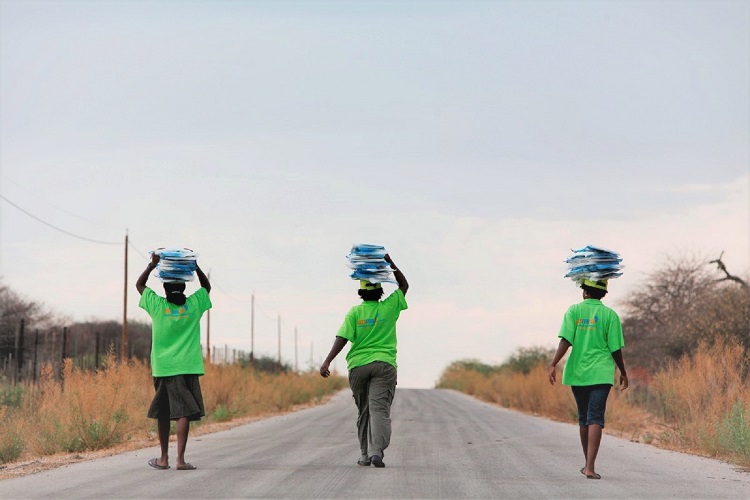
Women carry impregnated mosquito nets on their heads for distribution in the surrounding villages.
El Hadj Diop was working as a photographer for UNICEF until 10 October 1999; that was the day when his eldest daughter Ami, aged 12, died after just two days of intense fever. Ten days later, Ami’s nephew was also taken by the same disease: malaria. “The Saturday when we buried Ami, several other children were also being laid to rest. They all died of the same cause,” recalls Diop.
Alou Niasse, a district head nurse in Thiénaba, a two-hour drive from Dakar, recalls that 20 years ago 65 per cent of hi patients suffered from malaria. “In the 1990s, dozens of people would die of malaria during the winter season,” explains Niasse, who has been working at a community health centre for over two decades.
It was in response to this fatal situation that Diop joined women from the 83 surrounding villages to start the Sopey Mohamed Islamic Association to combat malaria. The association brings together no less than 2600 volunteers from the villages surrounding Thiès, the second largest city in Senegal.



